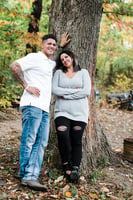While we were at the pool last week, a LARGE bumblebee landed on Gracie's flower bathing suit. I thought I was going to have a heart attack! I have never been a fan of bees, and this one landed on MY CHILD!
I immediately started doing the panicky mommy swats, trying to get it to fly away! Eventually I won the battle, and it didn't sting Gracie. Close call, but it had me thinking... what if it had??? I wasn't prepared at all! So, thankfully I found this article from our National Macaroni Kid newsletter! I had to share!!
Bee stings are either annoyingly painful or deadly, depending on if the victim is allergic to the venom. Removing the bee venom quickly is the best way to reduce any reaction. If a bee sting victim has had any allergic reactions to bee stings in the past, consider the possibility of a life-threatening allergic reaction. -First things first! Safety! Get away from the bee as they release the scent of danger to attract other bees. If you hang around, the others will be looking for you! -Remove the stingers right away! No need to scrape, just get them out! Its OK to pull out with your fingers, the longer they stay in the victim, the more severe the reaction is. -check to see if the victim is allergic to bees and if so, are they carrying an EpiPen? Help them use it and call 911. Do not wait to see symptoms! -allergic symptoms are itching, redness, hives, shortness of breath
-non-allergic victims will almost always develop redness, swelling, and pain at the site of the bee sting. The pain will usually go away shortly, but swelling may last for more than a day. -ice and ibuprofen or acetaminophen for minor pain relief. -honey bees leave a stinger behind when they sting a victim. Wasps, yellow jackets, and hornets do not leave a stinger.


